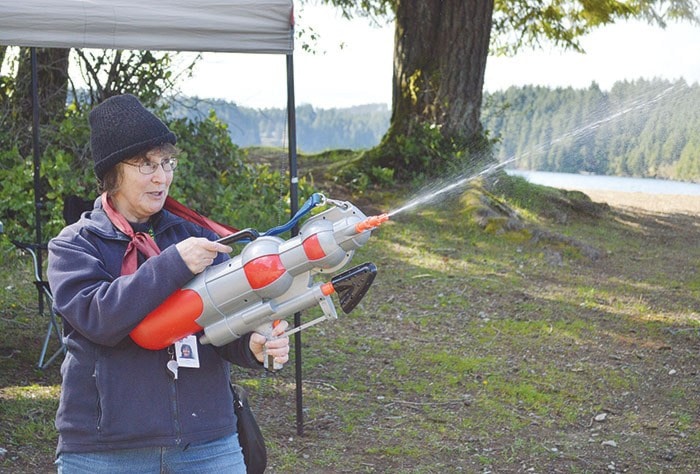The city is trying to raise awareness of the importance of protecting our drinking water watershed.
On May 10, city staff and volunteers hosted Waterfest at McIvor Lake to promote the value of protecting the watershed and the impact of common activities within the watershed.
“We find most people understand the need to protect our watershed but some people wouldn’t know the difference that it actually makes whether we dump (garbage) illegally or whether we swim in John Hart Lake – which we shouldn’t,” says Luisa Richardson, the city’s watershed outreach worker. “John Hart Lake is three to four days away from your drinking water glass. People should stay out of John Hart Lake.”
The goal is to get people to understand how each small action compounds over time and can potentially threaten our drinking water.
“We want to drive home the point how each person’s small contribution will make a mountain of trouble over time,” Richardson says.
She said throughout the summer, the city hopes to host interpretive walks through the watershed, hold scavenger hunts for kids at McIvor Lake and set up an area on the sand where kids can build their own watershed.
“We’re promoting good, clean fun in the watershed,” Richardson says.
Fast facts
- The city of Campbell River draws drinking water from a watershed encompassing 1,822 square kilometres of mountains, lakes, rivers and streams.
- The water is treated and delivered to homes through 290 kilometres of pipe.
- The city treats and distributes the equivalent of 3,410 Olympic-size swimming pools of drinking water.
